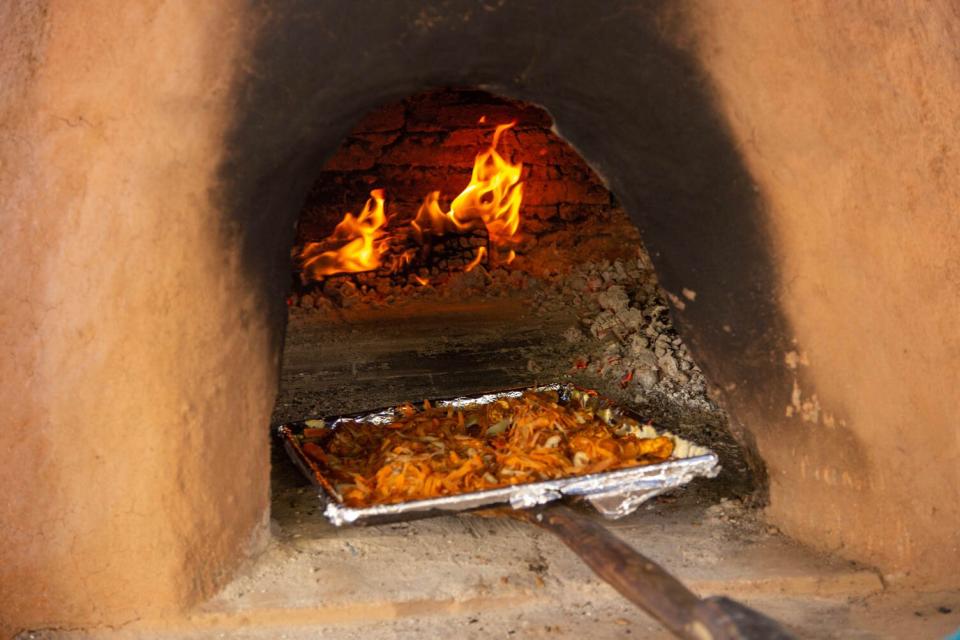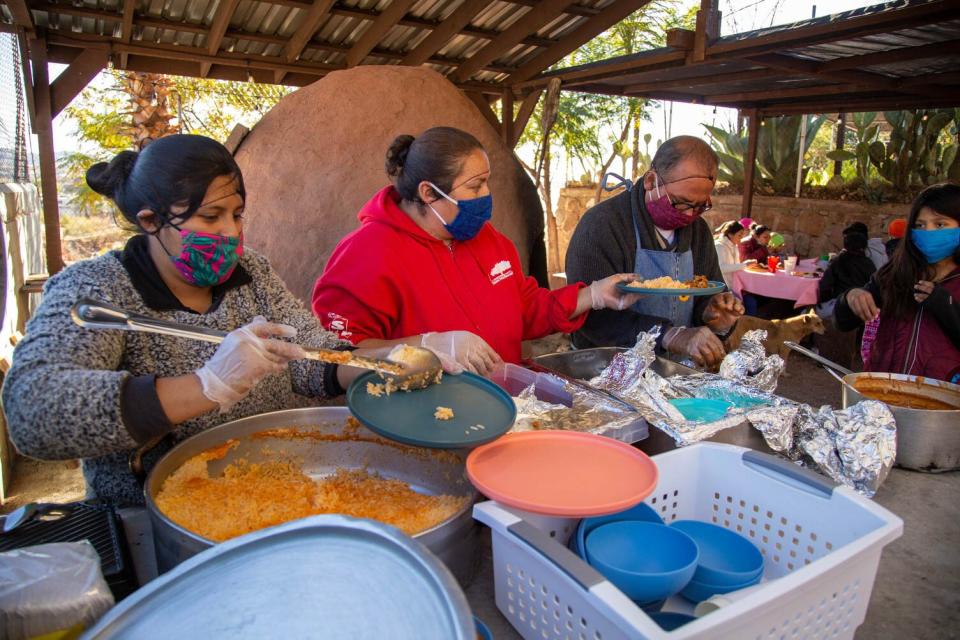These Clay Ovens Are Bringing Comfort to Migrants at the Border
At Casa de la Misericordia, a refugee shelter in Nogales, Mexico, a familiar memento reconnects its residents with community. It roars with warmth, nourishment, and family. It unites despite the very division in front and behind them. The horno, a clay oven shaped by hand, is reshaping those it feeds.
Alight—a humanitarian-aid organization working with displaced and marginalized communities worldwide—calls a tool like this Pedacito de la Tierra, or "A Little Piece of Home." The initiative launched in November 2020 and resulted from partnerships with Burners without Borders, renowned architect Ronald Rael, Catholic Sisters, and food educator and scientist Charles Michel, to restore dignity and hope for those seeking asylum. In a short film by Lina Plioplyte and Kai Schoenhals, the introduction of the horno shares a narrative about bread, resilience, belonging, and how it transcends forced separation. "It may be the very food that connects us as a human species. It's the most universal food of all," says Michel, who consulted on the project.

Courtesy of Alight
Led by Rael and Guatemalan migrant breadmaker Juan Carols Delgado, who was living at the shelter but has since been approved for asylum, the beehive-shaped, seven-foot diameter oven was built in four days. Its outer clay molding and adobe bricks are made entirely by residents of the shelter with local earth. The oven is used to cook stews, roasted meats and vegetables, charred corn, and can accommodate 100 loaves of bread at a time.
When Rael joined the project, he imagined bringing hornos to hundreds of shelters across the border as a form of activism, community building, and participation so migrants can reassert their traditions. "They're from different countries, customs, and cultures, but they share commonalities around food, recipes, stories, bread, and fire," says Rael, whose works, such as the Prada Marfa and the 2019 seesaw project, humanize the migrant journey. "[The oven] became like the hearth of the shelter around which we could gather and build something together as a community to make a community."

Courtesy of Alight
Like migrants themselves, clay ovens have traveled and adapted throughout time. The earthen oven has roots in in Ancient Greece, the Middle East and North Africa, before making its way to Southern Spain. It arrived in the Americas during the Spanish colonization. when it was adopted by Native American tribes.
"[The clay oven] has mutated and assimilated to conform to various cultures, traditions, and materials," says Rael. "It is a passport that allows one to give them permission to live, in a sense with the land and with their community using the humblest of material to make one of these, which is actually the land beneath their feet." At Casa de la Misericordia, run by Catholic Sister Alma Angelica Macias (known as "Sister Lika"), the oven is a centerpiece where everyone gathers as a family. No matter where a resident originates, no matter their circumstance, the food cooked in the horno sheds their differences and creates empathy for one another.
Rael often iterates a Spanish saying spoken throughout the borderlands: "las fronteras nos dividen, pero la tierra nos une," which means "borders divide us, but the earth unites us." While it literally refers to the landscape, Rael sees it differently. "We're connected by land. And these borders are just abstractions or artificial lines drawn in the sand manifested as walls that sometimes say, this is here, and this is there," he explains. "But the land is actually continuous. And the cultures are continuous. And there's something interesting to me about making an oven out of the earth itself to bring people together and unite us."
Throughout the world, bread appears in many forms. For Michel, Colombia and Venezuela's arepas sparks candid discussions about which country owns it, but really it links two populations at odds. For the shelter, the loaves unify residents and the community at large. One goal is to nurture the horno (and the shelter itself) to become an integral part of the area.
Similarly, Michel believes a hearth like this could help de-commoditize food (one of the central tenets of Burners without Borders) and provide a pillar of engagement worldwide. "In the long term, what if the hornos, or places of fire and food, became a unifying public-space intervention all over the world," he envisions. "I'm thinking in cities, bringing food back at the center of our lives, learning about food, interacting with it, using it as a tool for human connection, and connection to the earth."
This is exactly how Alight hopes future hornos will evolve. As immigrants continue on their journey, the oven will continue to sustain those passing through as an indestructible witness of humanity. The horno made its migration thousands of ago. It has spanned cultures worldwide. And it has inevitably become a little piece of home.

